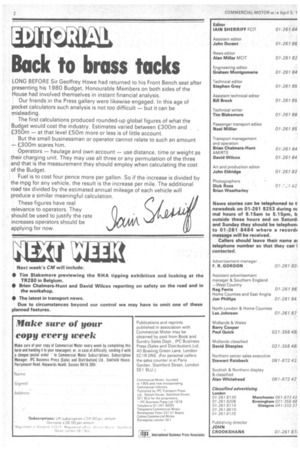Back to brass tacks
Page 4

If you've noticed an error in this article please click here to report it so we can fix it.
LONG BEFORE Sir Geoffrey Howe had returned to his Front Bench seat after presenting his 1980 Budget, Honourable Members on both sides of the House had involved themselves in instant financial analysis. Our friends in the Press gallery were likewise engaged, In this age of pocket calculators such analysis is not too difficult — but it can be misleading.
The first calculations produced rounded-up global figures of what the Budget would cost the industry. Estimates varied between £300m and £350m — at that level £50m more or less is of little account.
But the small businessman or operator cannot relate to such an amount — £300m scares him.
Operators — haulage and own account — use distance, time or weight as their charging unit. They may use all three or any permutation of the three . and that is the measurement they should employ when calculating the cost of the Budget.
Fuel is to cost four pence more per gallon. So if the increase is divided by 'the mpg for any vehicle, the result is the increase per mile. The additional road tax divided by the estimated annual mileage of each vehicle will produce a similar meaningful calculation.
These figures have real relevance to operators. They should be used to justify the rate increases operators should be applying for now.




































































































